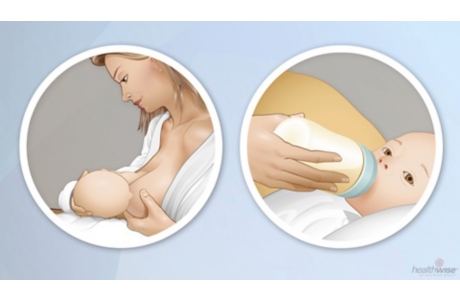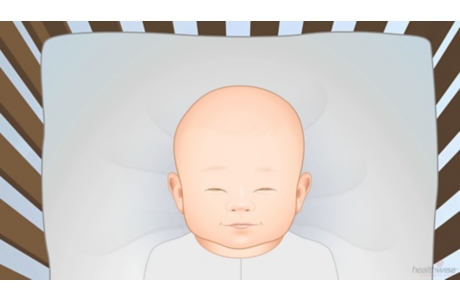Breastfeeding: How to Use a Breast Pump
Overview
A breast pump is a device that allows you to empty milk from your breasts whenever you want to or need to. Then you can store the milk for later.
Using a breast pump is a good way to provide the benefits of breastfeeding when you have to be away from your baby. Pumping will help keep up your milk supply. It also prevents the discomfort of your breasts getting too full of milk.
You can also use a breast pump to slowly reduce your milk supply if you have to stop breastfeeding.
How to use a breast pump
Pumping milk with a breast pump will probably take 10 to 20 minutes for each breast, but it may take longer. To keep your milk supply up, try to pump at least every 3 to 4 hours, and breastfeed as often as you can.
- Get to know your pump.
Read all the instructions that came with your pump. Be sure you know how to put it together and how often you'll need to clean and sanitize the parts. It's a good idea to have supplies and spare parts in all the places where you'll use the pump, such as at home and at work.
- Choose a good place to pump.
Find a spot that's clean, comfortable, and private so you can relax. If you're pumping at work, you may feel more at ease in a room that has a door you can lock. Have water, food, and something to read with you, if you wish.
- Wash your hands before you touch the breast shield or your breast.
Use soap, and scrub your hands for 10 to 15 seconds. Then rinse well in warm water. Use a clean paper towel to dry your hands.
- Put the pump together.
As you put it together, check to see that all parts are clean.
- Get in the mood.
Holding your baby may improve your milk letdown. If you aren't with your baby, try looking at a photo or sniffing a piece of clothing your baby has worn.
- Position the breast shield over your breast.
Your nipple should be right in the middle of the shield. You may need to try a few different sizes of breast shield to find one that fits you best. Some women use a special bra that holds the shield in place. This lets you have your hands free.
- Start pumping.
Begin with a low level of suction. Increase suction as your milk starts to flow. Some pumps will do this for you. To know when to stop pumping, watch for signs that your breasts are empty. You will feel a tugging while pumping, but it shouldn't be painful. If it hurts, stop pumping. Change the position of the breast shield, or try a different size of breast shield.
- Empty both breasts during each pumping session.
After you pump, your breasts should feel soft with no hard areas.
After you finish pumping:
- Put the milk in a refrigerator or cooler right away. It's best to use milk as soon as you can after you pump it. If you won't be using the milk within a few days, you can freeze it. Be sure you know how to store breast milk safely.
- Take the pump apart, and wash well any part that came in contact with your breast or breast milk. Let the parts air-dry.
If you have problems using a breast pump or have concerns about your milk supply, talk to a lactation consultant.
Credits
Current as of: July 10, 2023
Author: Healthwise Staff
Clinical Review Board
All Healthwise education is reviewed by a team that includes physicians, nurses, advanced practitioners, registered dieticians, and other healthcare professionals.
Current as of: July 10, 2023
Author: Healthwise Staff
Clinical Review Board
All Healthwise education is reviewed by a team that includes physicians, nurses, advanced practitioners, registered dieticians, and other healthcare professionals.
This information does not replace the advice of a doctor. Healthwise, Incorporated, disclaims any warranty or liability for your use of this information. Your use of this information means that you agree to the Terms of Use. Learn how we develop our content.






